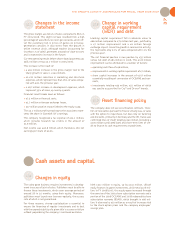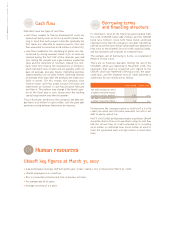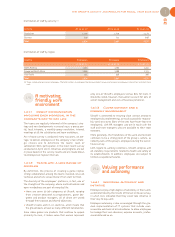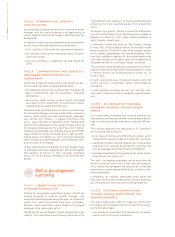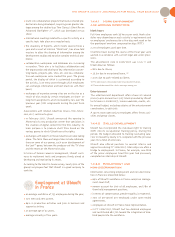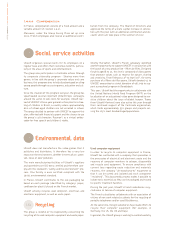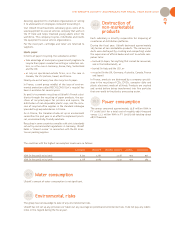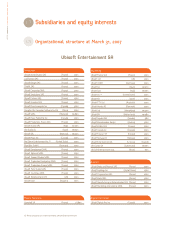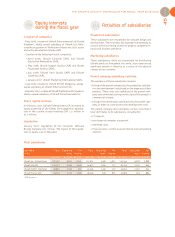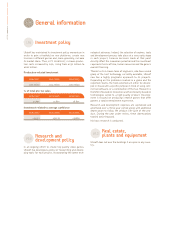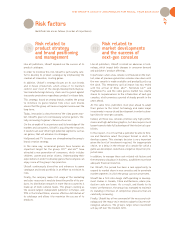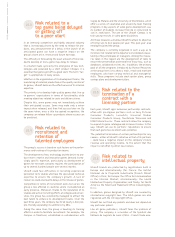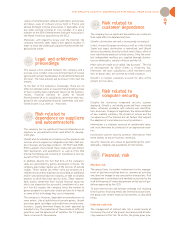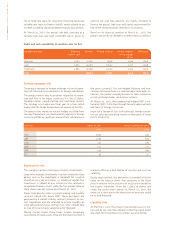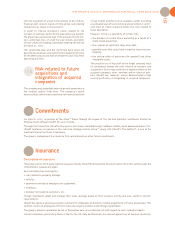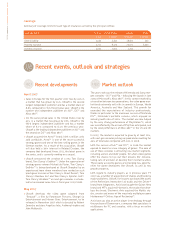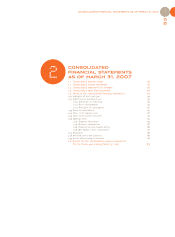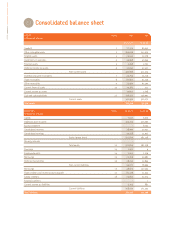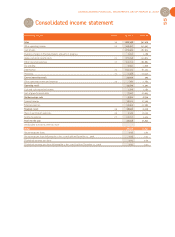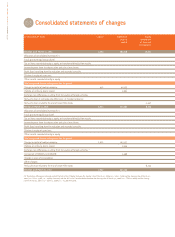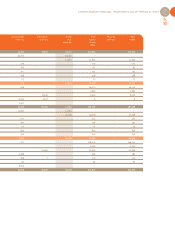Ubisoft 2006 Annual Report Download - page 59
Download and view the complete annual report
Please find page 59 of the 2006 Ubisoft annual report below. You can navigate through the pages in the report by either clicking on the pages listed below, or by using the keyword search tool below to find specific information within the annual report.
THE GROUP'S ACTIVITY AND RESULTS FOR FISCAL YEAR 2006-2007
47
1
Risk related to
product strategy
and brand positioning
and management
Like all publishers, Ubisoft depends on the success of its
product catalogue.
In order to minimize this risk, Ubisoft is particularly care-
ful to develop its product catalogue by emphasizing the
creation of innovative, riveting games.
In addition, Ubisoft’s strategy focuses on its own brands
and in-house production, which allows it to maintain
control over most of the design/development/duplica-
tion/manufacturing/delivery chain and to guard against
inaccurate projections regarding a product's release date.
This strategy, based on strong brands, enables the group
to minimize its game-related risks since such brands
ensure that the group will receive regular income over the
long term.
Today, innovation is a key element of the video games mar-
ket. Ubisoft’s goal is to continuously surprise gamers, the-
reby increasing its games’ chances of success.
On the strength of its experience and its knowledge of the
markets and consumers, Ubisoft is acquiring the resources
it needs to win over other high-potential segments, such as
car games, that will enhance its catalogue.
Hollywood and TV licenses are strengthening the group’s
brand creation strategy.
In the same way, occasional gamers have become an
important target for the group. DS™ and Wii™ have
attracted a new generation of consumers, which includes
children, women and senior citizens. Understanding their
expectations in order to develop games that everyone can
enjoy is one of the group’s top priorities.
Ubisoft continuously diversifies and enhances its game
catalogue and brand portfolio in an effort to minimize its
risks.
Finally, the company makes full usage of the marketing
and sales resources it needs to boost the profile of its pro-
ducts. Its distribution network in more than 50 countries is
made up of multi-cultural teams. The group’s ranking as
the second largest independent publisher in Europe, and
fifth in the United States, ensures effective distribution of
its catalogue and allows it to maximize the success of its
products.
Risk factors
Identified risks are as follows (in order of importance):
Risk related to
market developments
and the success of
next-gen consoles
Like all publishers, Ubisoft is reliant on advances in tech-
nology, which impact both changes in consumer demand
and publishers’ product offerings.
In particular, when a new console is introduced on the mar-
ket, sales of previous-generation consoles slow down until
the new console is made available and gradually picks up
the slack. This temporary cyclical impact has now ended
with the arrival of Xbox 360™, Nintendo Wii™ and
PlayStation®3, and the video games market has clearly
shown its responsiveness to the introduction of next-gen
consoles, which promises a period of steady growth in the
years ahead.
At the same time, publishers must plan ahead to adapt
their games to the latest technology and make major
investments in research and development in order to deve-
lop titles for next-gen consoles.
Indeed, all these new consoles promise very high perfor-
mance and high-definition graphics, but also require much
larger teams to take full advantage of their technical capa-
bilities.
In this respect, it is critical that a publisher be able to fore-
see and therefore select the proper format in which to
develop a game. This strategic decision is very important
given the level of investment required. An inappropriate
choice, or a delay in the release of a console for which a
game was developed, could have a negative impact on pro-
jected sales.
In addition, to manage these cost-related risk factors and
the temporary slowdown in business, a publisher must have
adequate financial resources.
For Ubisoft, this period has been a real opportunity to
expand its market share in new consoles and to penetrate
market segments in which the group was not yet present.
Ubisoft has a first-rate design staff operating in develop-
ment studios in Canada, China and Romania, where pro-
duction costs are lower. As a result, and thanks to its
teams’ performance, the group has managed to maintain
its standing in the face of competitive pressures that are
constantly increasing.
Finally, Ubisoft has a firm command of the necessary tech-
nology and the resources it needs to adapt to future tech-
nological advances. The group’s large initial investment
will pay off over the medium term.
1.9.1 1.9.2
1.9


